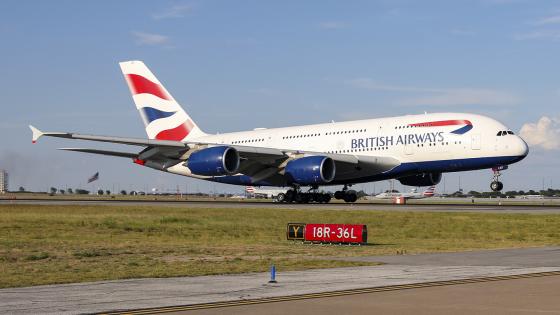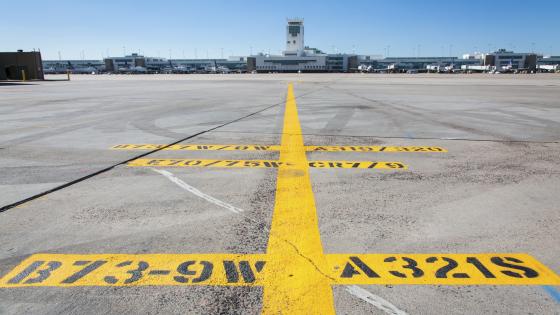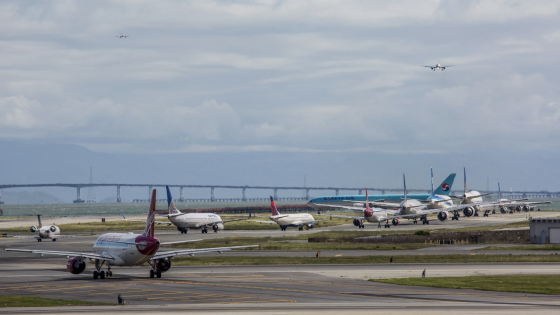FAA-backed runway safety initiatives are currently being rolled out across US airports. Mark Broadbent looks at the latest technology
Between October 2016 and the end of 2022, US airports saw 1,641 ‘wrong surface incidents’, where aircraft unintentionally landed on taxiways rather than runways. The Federal Aviation Administration (FAA) is understandably keen to avoid these and other major safety hazards, so has introduced various solutions designed to help improve runway and taxiway safety at airports across America.
Two innovations being implemented are Airport Surface Detection Equipment – Model-X (ASDE-X) and the Airport Surface Surveillance Capability System (ASSCS), both supplied by Saab. An FAA spokesperson told Airports International that the agency “has completed all planned deployments” of these systems

ASDE-X
First deployed in 2003, ASDE-X is now in operation at 35 major US airports. The technology is Saab’s Advanced Surface Management, Control and Guidance System (A-SMGCS), which the manufacturer describes as “a proven, high performance and standards-compliant system [that] enhances a controller’s ability to manage airport traffic in all visibility and weather conditions”.
The ADE-X system fuses data from the surface surveillance radar on top of the air traffic control tower and/or radar located on a remote tower, multilateration (MLat) sensors, ASDE-3 surface movement/surveillance radars, automatic dependent surveillance-broadcast sensors and terminal automation flight plan data. It determines the position of aircraft and vehicles on the ground and aircraft on final approach. Controllers see this information on a colour display that shows moving aircraft and vehicle positions as icons overlaid on a map of the airport's runways/taxiways and approach paths. The system continuously updates the data and the resulting detailed coverage of movements enhances situational awareness – particularly beneficial at night or in poor visibility caused by inclement weather.
ASDE-X is also equipped with visualand aural alarms to alert controllersof possible runway incursions or incidents. The system can also tracknon-transponder-equipped vehiclesand aircraft.

Taxiway Arrival Prediction warns ATC controllers of ‘misalignment’
SSM
In October 2019, the FAA introduced the Surface Safety Metric (SSM) to measure and report runway safety performance and more accurately identify risks to aircraft. The SSM incorporates all relevant events in the runway environment, encompassing commercial and non-commercial aircraft, vehicle and pedestrian movements, runway collisions, excursions and incursions, and other surface incidents.
The system is part of concerted action by the FAA to improve runway safety that is leading to developments on various fronts, as well as the adoption of ASDE-X and ASSC.
Status lights
Runway status lights, now operational at 20 US airports, are designed to increase situational awareness for aircrews and airport vehicle drivers. They use traffic information from surface and approach surveillance systems to illuminate red in-pavement airport lights to signal a potentially unsafe situation.
Similarly, runway entrance lights are deployed at taxiway/runway crossings and illuminate if it is unsafe to enter or cross. Take-off hold lights are deployed on the runway by the departure hold zone and illuminate red when there is an aircraft in position for departure or if the runway is occupied by another aircraft or vehicle and is unsafe for take-off.

SFO benefits from the FAA’s recent runway safety initiatives
Runway incursion mitigation
The FAA’s national runway incursion mitigation (RIM) initiative identifies airport-specific risks such as unclear taxiway markings and airport signage or complex runway/taxiway layouts. The agency then works with airports to develop strategies to reduce accidents at these locations. As of March 2023, the FAA had identified 126 RIM locations at 80 airports, with mitigations introduced at 91 locations. There is an average 78% reduction in runway incursions at airports where mitigations have been applied, the FAA says.
At locations where physical changes to the runway are unfeasible, an education campaign or a ‘hot spot’ designation – enabling users to plan safe paths of movement – is employed.
In May 2022, the FAA standardised hot spot symbology and verbiage on airport diagrams, bringing consistency to how potential risks are displayed. The RIM programme continuously monitors locations for reoccurrence and assesses new RIM candidates.
Alerts and education
The FAA has added arrival alert notices to the charts of 12 US airports where there’s a history of misalignment, using graphics to visually depict the approach hazards and language describing the risk. The Federal NOTAM System now includes automated publication of Airport Construction Notices and Automated Closure Notice diagrams.
The FAA has produced 100 site-specific ‘From the Flight Deck’ videos to educate and inform pilots and controllers of the risks at specific airports. These cover wrong surface landings, complex airfield geometry, hold short, wrong direction intersection take-offs and more. Additional airport videos are planned for 2023.
A Runway Safety Pilot Simulator video series assists flight instructors when teaching student pilots surface safety best practices. Supplemental web content on faa.gov includes airport-specific cautions, communications, airspace details, best practices and other pre-flight planning resources. This content is currently available for 25 airports across the NAS, with more in development.
